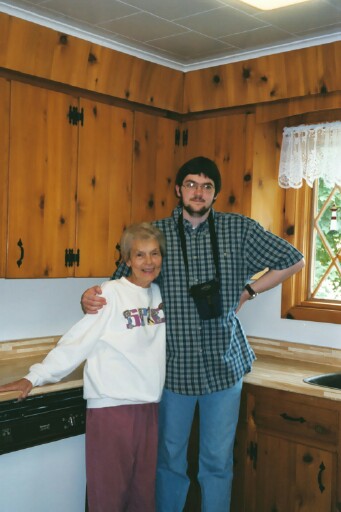
From left to right: Mary, William Matheson (self).
PS9 - Sydney, North Sydney, Tarponds
In the week between the anniversary party and the Clan Davage reunion, I stayed in North Sydney with my first cousin once removed, Glenis, and her mother Mary. Glenis keeps a very nice house and after a couple of days on Boularderie coping with, among other things, tap water that smelled like rotten eggs, I was overjoyed to go from one extreme to the other, so to speak.
Important! In my new initiative to be kinder and gentler to the world around me, I am noting that I have not given North Sydney or Sydney their fair due, photography wise. Hence, I am now providing a link to the North Sydney Community Portal's photo gallery, where I am sure you'll all be able to find much better pictures. Here's a comment that was placed recently that probably reflects the opinions of the natives:
D. Dunn, of Scotiabank writes: I am dissappointed at your pictures in North Sydney. You took a picture at the bottom of Peppet St, but not the Brook and small park just a block further. You took pictures on Commercial St, but not of the beautiful waterfront park. You photographed an empty ferry dock, but not the majestic beauty of a ship entering or leaving the harbour. [I *would* have, but the ferry wasn't in! Should I have stood there for eight hours until the next one came in? =) - ed] The one nice picture, of the well kept home and garden, you criticized regarding the cost. I think you should likely just stay at home; you are too cynical and critical to be allowed to into the real world.
*** this page has been modified as part of my new program to remove surnames and precise kinship terms ***

From left to right: Mary, William Matheson (self).
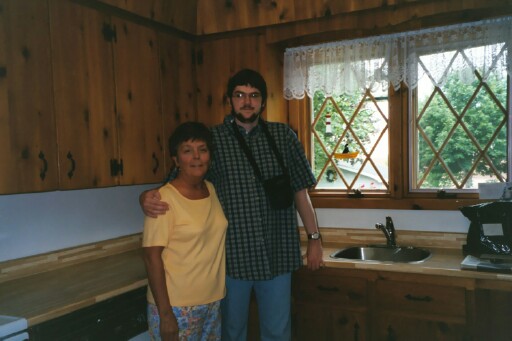
From left to right: Glenis, William Matheson (self). I had better
smiles in the pictures they took with their cameras - it wore off
on me! =)
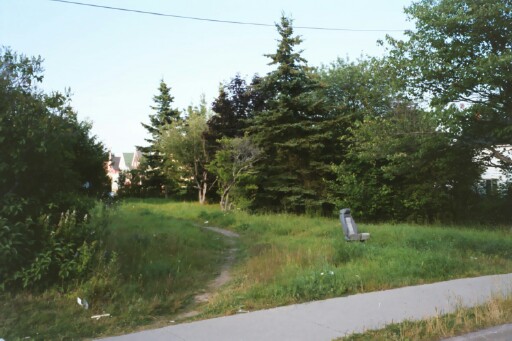
Peppett Street, North Sydney (there are nicer parts). Going about the
streets of greater Sydney, you tend to find litter and garbage everywhere,
maybe some shopping carts by the railway tracks... but an automobile seat?!
About a minute after taking this picture and continuing on my way, a couple
behind me asked me to solve a debate for them. The question was, why did
I take that picture? "I don't see the beauty in that," said the woman.
Neither do I. The husband said that he thought it had to be the chair,
and he was right. Anyway, the thing I love most about Cape Breton is that
no one ever hesitates to talk to a stranger.
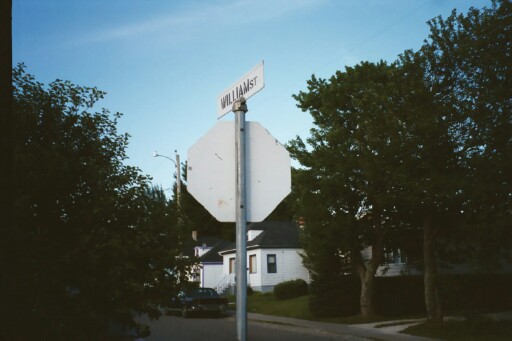
Of course I had to take a picture of my namesake.
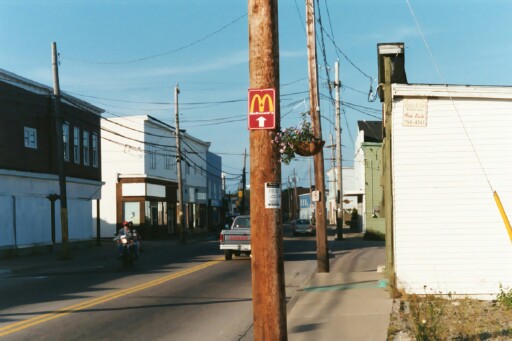
Commercial Street, North Sydney (again, there are nicer parts). One
thing I find amusing about industrial Cape Breton is that in every town
there will always be little signs telling you how to get to the McDonald's.
No signs for the police stations or hospitals, just the McDonald's. You
don't see signs pointing out the McDonald's in Bedford, thank goodness.
Well, people would probably deface them, wouldn't they?
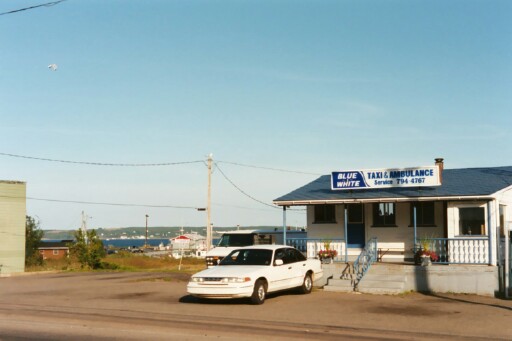
At least it's not "Ambulance & Pizza Delivery."
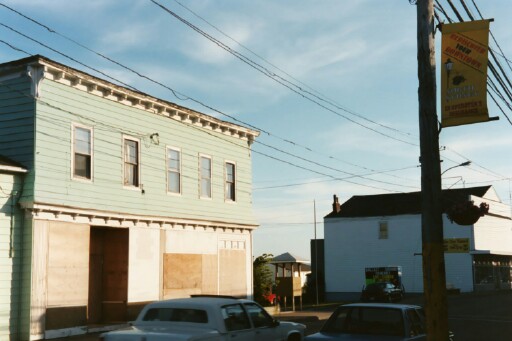
Right: "Rediscover Your Downtown" banner. Left: Yet another
abandoned building.
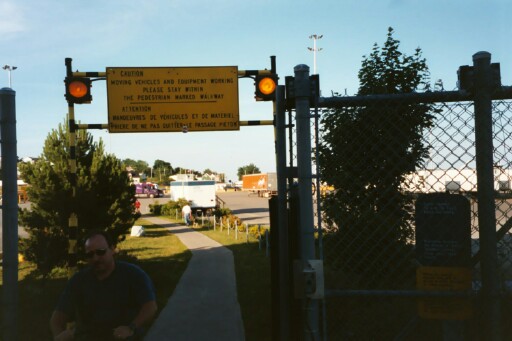
The transition between downtown North Sydney and the Marine Atlantic
ferry terminal, marked off by a fence.
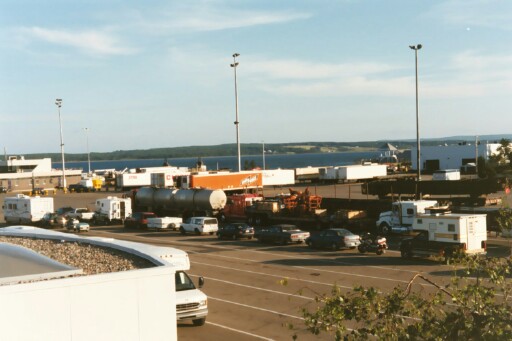
Vehicles waiting to go to Newfoundland.
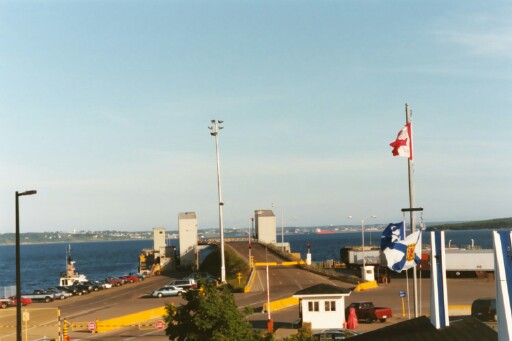
I can see why they'd have a gate, but why the red lights? Let's say
the light was green, but no boat was in. Would people drive onwards, thinking
they could get to Newfoundland?
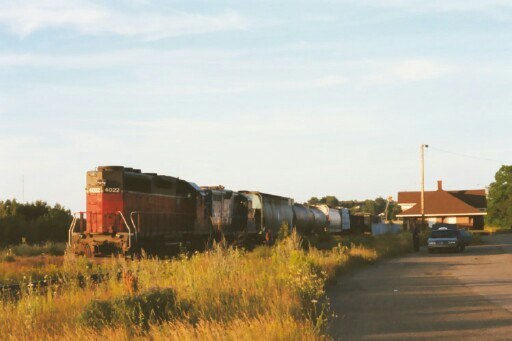
Suprisingly, a train still 'stops' in North Sydney (as in, the crew
hops into that taxi cab, and they go for coffee). Unfortunately, the company
that runs the Cape Breton Railroad has applied to stop the run. That would
be a disaster for Sydport and the area economy, and it also brings back
the philosophical and economic question of why we are paying millions to
repair our roads from the damage of the tractor trailers (one of those
equaling 20,000 cars in terms of pavement wreckage), when we could just
load up a train for those long distances. It saves fuel, too. So I'm voting
for a major comeback for freight trains. For people, though, airplanes
are more efficent in cost and travel time (as you'll quickly discover if
you try to plan a voyage by train in this country).
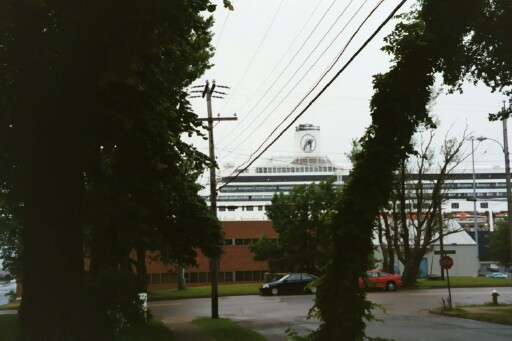
Walking on George Street in Sydney, I saw... a cruise ship? Wow.
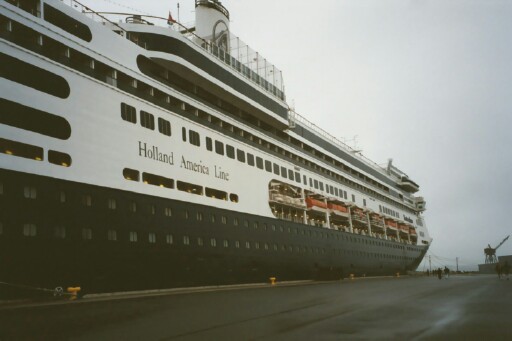
She's massive, eh?
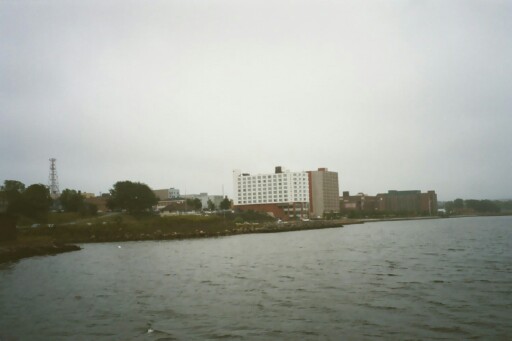
The Sydney waterfront.
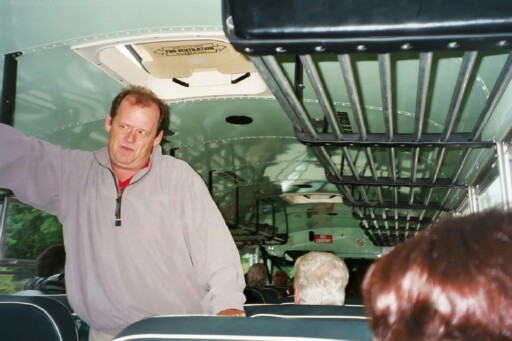
The undisputed highlight of my summer (make that my life, actually),
was the Joint Action Group For Environmental Clean-Up Of The Muggah Creek
Watershed's (or, JAG's) "Site Tours of the Sydney Tar Ponds & Coke
Ovens." I saw their postcard up at Nina's my first night there, and wondered,
"is that a joke?" Then I said, "I am SO doing that!!" The man seen here
conducts the tour, his name is Walter van Veen, and he is the Progam Co-ordinator
for the JAG. The purpose of the JAG is to evaluate what needs to be done
concerning Muggah Creek, then they make a recomendation to government.
It all turned out to be a very educational experience, where I learned a lot about the actual cleanup proposals, but also about politics, people, consensus building, and money. It made some of the issues I see come up with the Bedford Waters Advisory Committee seem kind of pedestrian compared to this enormous undertaking. My only complaint is that it ran a little long - I think a good timeframe for the tour would be 100-105 minutes as opposed to 130 minutes. (They schedule for 90, but you know how it is.)
For more information, visit www.muggah.org. The tour is free, but you will need reservations - call Peter Ross at (902)-564-9399. The tour departs from the Civic Centre on the Esplanade in Sydney. This information is valid for the summer of 2002 - I can't say if there will be tours next year or not.
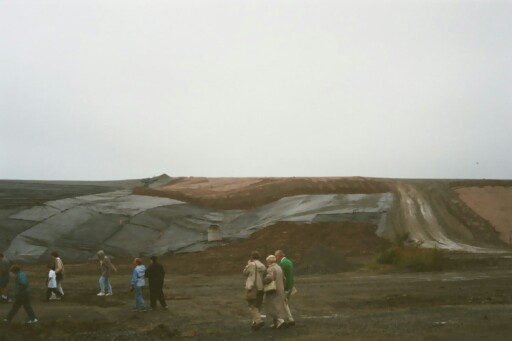
The first stop on the tour, the old Sydney landfill. At the moment,
it had just been filled, and a cap was being constructed.
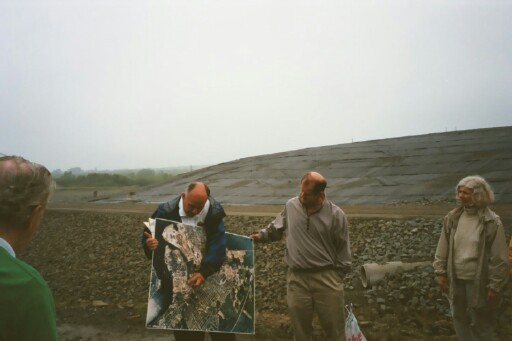
Left: Barry McCallum, Project Manager, Conestoga-Rovers &
Associates. From what I saw, his job is to hold up signs and placards for
Walter.
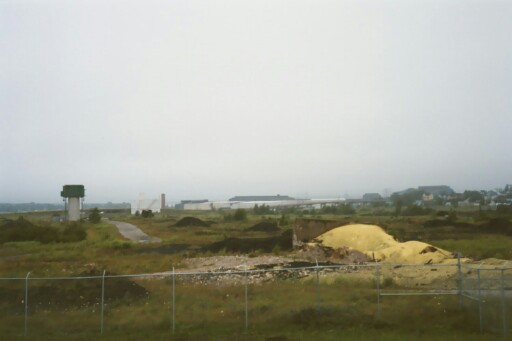
The Coke Ovens site. What happened here is that work began on the tower
that once stood on the right, then the project was cancelled, and everything
was dropped where it was. The yellow stuff is a kind of sulfur. The mounds
are coal. Amazingly, there's a lot of wildlife in this area. They probably
know not to eat the asbestos.
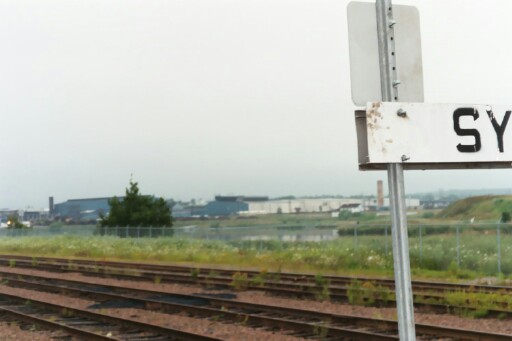
The water you see here beyond the fence is the literal "tarpond." Really,
it's not as bad as it's made out to be, it's just sludge with water on
top. It's more of a political blemish than anything else - from what I've
heard, it probably won't hurt anyone much unless they go play in it (or
if it seeps into nearby basements, which has been happening from time to
time). Three things may happen to this area of Muggah Creek. One: Nothing.
Two: It gets covered over. Three: It gets cleaned up. A final decision
on this is a long way from being made. One thing they should consider:
if they take away the Sydney tarponds, what then becomes the thing everyone
associates with Sydney? What else does Sydney make the national news about?
We would have got a better view of the tarponds, but the gates were locked, and Barry forgot to phone ahead that we were coming. Well, I'm sure somebody out there has some great pictures.
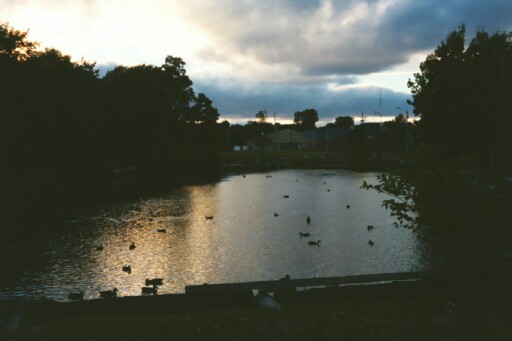
Ducks, Queen Street, North Sydney.
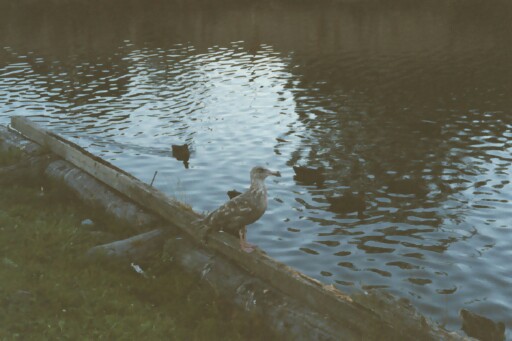
I don't think that's a seagull, is it? I mean, look at the bill on
the thing.
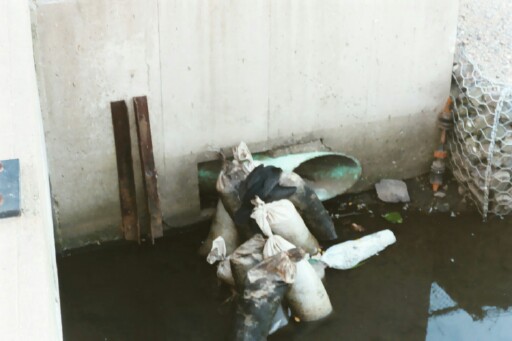
A brook in North Sydney.
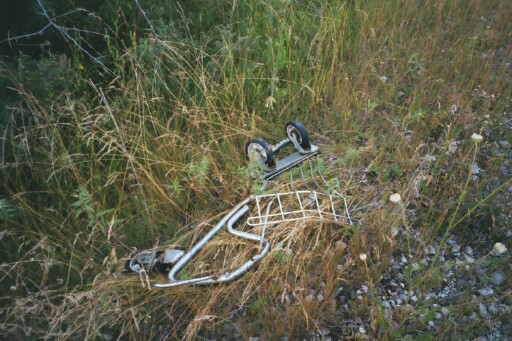
Beside the railline in North Sydney. I think some of the residents
ought to respect their home town a little more. (except for D. Dunn
of Scotiabank, who really put me in my place - thank you)
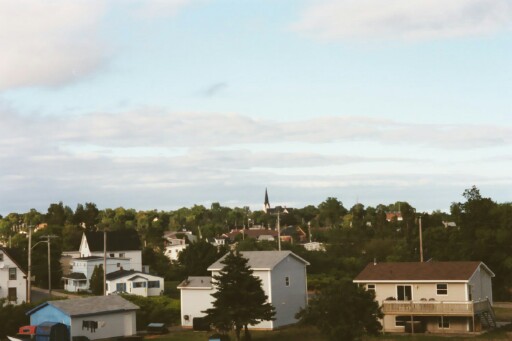
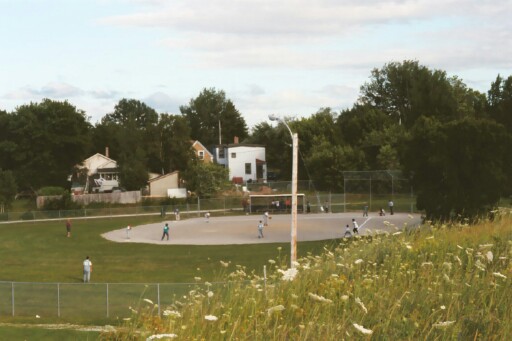
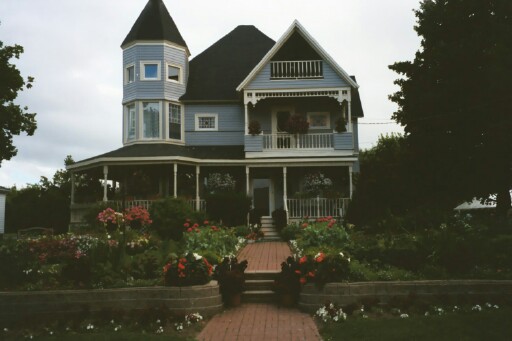
There's a guy in North Sydney who spends $5K a year on his flower gardens.
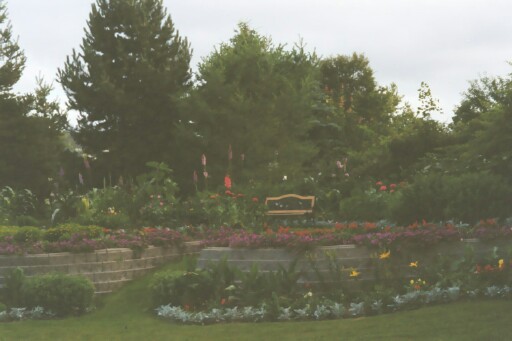
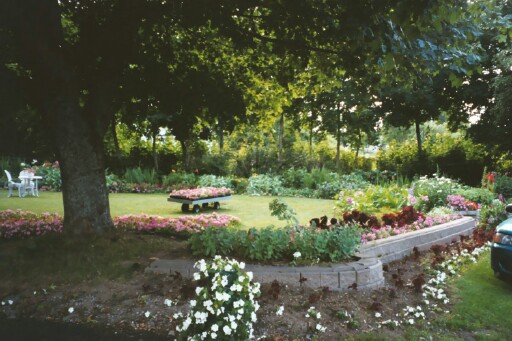
... and what has all this taught me? Having taken so many underexposed pictures tells me that I need to start using 800-speed film, or get a manual camera and a tripod. But that would be a lot of stuff to carry around, wouldn't it?